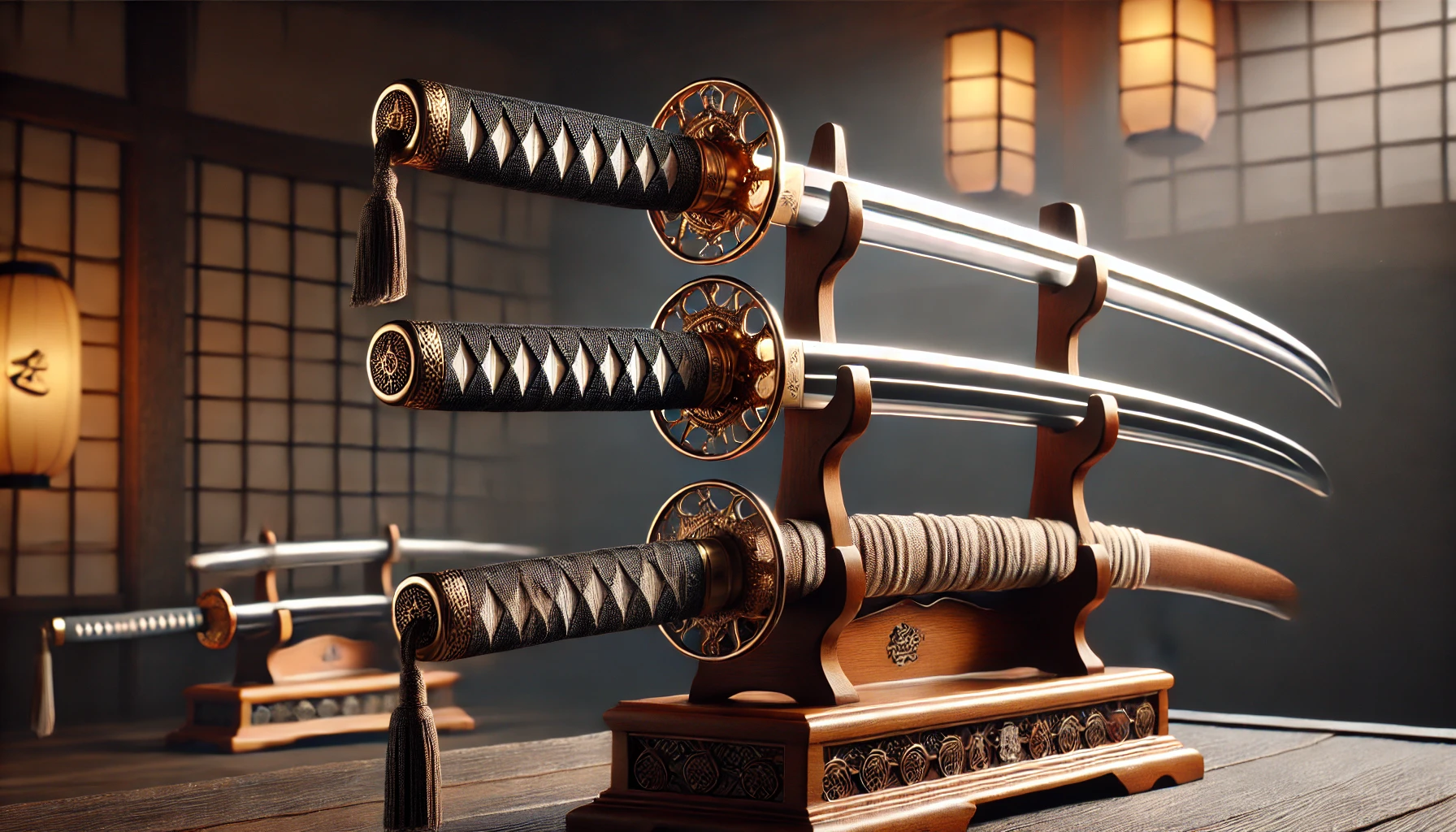
Samurai swords – The legendary blades of the Japanese warriors
Samurai Swords: More Than Just Weapons
Samurai swords, also known as katanas, are more than just weapons – they are symbols of honor, discipline, and craftsmanship. For centuries, these masterfully forged blades have fascinated warriors, collectors, and martial artists around the world. In this article, you'll learn everything about the history, manufacturing, types, and care of Samurai swords.
The History of Samurai Swords
The origins of the katana date back to the 10th century. Japanese swordsmiths developed this special weapon to meet the needs of the Samurai. While earlier swords like the tachi were more curved, the katana was designed with a slimmer shape to allow for quicker and more effective use on the battlefield.
During the Edo period (1603–1868), the katana became a status symbol for the Samurai. It was considered an extension of the wearer’s soul and was closely tied to strict codes of honor, such as Bushidō. Even after the end of the Samurai era, the katana remained a cultural legacy and is now a sought-after collector's item and training tool for martial artists.
Crafting a Genuine Katana
Making a traditional Samurai sword is an art that demands utmost precision. The finest katanas are forged from Tamahagane steel – a specially produced steel that strikes a perfect balance between hardness and flexibility.
🔹 Forging process: The metal is folded multiple times to remove impurities and create a resilient, razor-sharp blade.
🔹 Varying hardness levels: The blade often has a soft core for flexibility and a hard outer layer for extreme sharpness.
🔹 Hamon line: A unique pattern (hamon) forms along the edge due to differential hardening.
🔹 Polishing and sharpening: After forging, the katana is polished using traditional methods to ensure its legendary cutting power.
A truly hand-forged katana can take months to complete – which is why genuine masterpieces are extremely valuable.
Types of Samurai Swords
Samurai didn’t rely on just one type of sword – different blades were used for different purposes:
🔸 Katana: The classic, single-edged blade measuring around 60–80 cm.
🔸 Wakizashi: A shorter version of the katana (30–60 cm), often worn as a secondary weapon.
🔸 Tanto: A dagger used for close combat or ceremonial purposes.
🔸 Nodachi / Odachi: Extremely long swords used primarily on battlefields.
🔸 Tachi: A predecessor of the katana with a more pronounced curve, often used on horseback.
Traditionally, samurai wore the daisho – a set of katana and wakizashi – as a symbol of their rank and status.
Use and Martial Arts Involving the Katana
A samurai sword is not just a weapon – it’s a core element of Japanese martial arts:
✔ Iaido: The art of swiftly drawing and cutting in one fluid motion.
✔ Kendo: A modern sport based on traditional samurai swordsmanship.
✔ Kenjutsu: The classical sword-fighting art of the samurai, taught in many traditional schools.
✔ Tameshigiri: A test-cutting technique where the katana is tested on tatami mats or bamboo.
These martial arts emphasize precision, discipline, and a deep connection between warrior and blade.
Caring for and Storing a Samurai Sword
A real katana requires careful maintenance to preserve its sharpness and longevity:
🔹 Oiling the blade: Regular application of choji oil prevents rust formation.
🔹 Cleaning: The blade is cleaned with special uchiko powder to remove fingerprints and dirt.
🔹 Storage: The katana should be stored in a dry environment, inside a suitable saya (scabbard).
🔹 Avoid direct contact: Touching the blade with bare hands can compromise its protective coating due to skin oils.
Collectors and sword enthusiasts invest a great deal of time in maintenance to preserve the blade’s quality and cultural value.
Conclusion: What Makes Samurai Swords So Special?
The katana is much more than a historical weapon – it is a masterpiece of craftsmanship, a symbol of samurai honor, and a captivating legacy of Japanese culture. Its legendary sharpness, elegant design, and deep spiritual significance make it a highly desired collector’s item and an unrivaled weapon in martial arts.
Whether you're searching for a traditionally hand-forged katana, looking to learn more about Japanese swords, or exploring martial arts like Iaido and Kenjutsu – the world of samurai blades remains timeless and fascinating.
Frequently Asked Questions (FAQ)
❓ Are samurai swords legal in Germany?
✔ Yes, real, sharpened katanas are legal in Germany, but they may not be carried in public.
❓ How much does a real katana cost?
✔ Prices vary greatly – a genuine hand-forged katana typically starts at around €1,000 and can go up to €50,000 or more.
❓ What’s the difference between a real and a decorative katana?
✔ Real katanas are made from high-quality steel and are functional, whereas decorative katanas are often made from inferior materials and meant solely for display.
❓ Where can I buy a high-quality katana?
✔ High-quality samurai swords are available from specialized dealers in historical weapons, martial arts equipment, or custom swordsmiths.